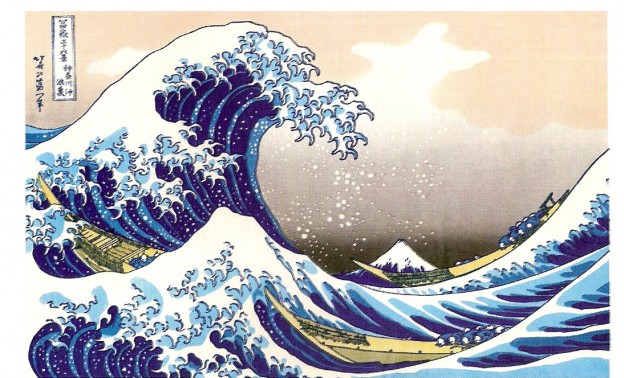Japan uses to publish periodically » Energy Plans » which outline its energy policy. Shortly before the Fukushima nuclear disaster caused by a devastating tsunami, in March 2011, Japan which then produced 30 % of its electricity with nuclear reactors had decided to increase to 50% the share of nuclear power in 2030. This catastrophe obviously had a major impact on Japan’s energy strategy for the country was forced to phase out its 48 nuclear reactors (the last one of was shut down in September 2013). Since then, the debate on the future of energy policy, and in particular its nuclear dimension, did not stop when the consequences of the disaster are still visible in the Fukushima region where « nuclear refugees » cannot return home located in a restricted area (many of them having lost their homes in the tsunami). Energy projects have been completely revised but Japan first had stopgap by substituting nuclear for electricity generation by thermal plant fed by gas, oil and coal (see P. Papon » Japan looking for an energy strategy, » Futuribles , No. 400 p. 119, May-June  2014, www.futuribles.com ). Electricity production fell by 10 % between 2010 and 2013 and part of the production by nuclear power has been replaced by thermal power plants fired by imported fossil fuels (for 90 % of electricity production today instead of 60 % before Fukushima): LNG imports to meet demand increased by 25 %. Japanese experts believe that the extra cost of energy and energy imports are largely responsible for the Japanese trade balance deficit recorded since 2011 (for the first time in thirty-one years). A government agency has thus estimated the extra energy cost supported by the Japanese economy amounted to 3.8 trillion yen in 2013 (25 billion euros) which corresponds to 0.6% of GDP, which is far from being negligible.
2014, www.futuribles.com ). Electricity production fell by 10 % between 2010 and 2013 and part of the production by nuclear power has been replaced by thermal power plants fired by imported fossil fuels (for 90 % of electricity production today instead of 60 % before Fukushima): LNG imports to meet demand increased by 25 %. Japanese experts believe that the extra cost of energy and energy imports are largely responsible for the Japanese trade balance deficit recorded since 2011 (for the first time in thirty-one years). A government agency has thus estimated the extra energy cost supported by the Japanese economy amounted to 3.8 trillion yen in 2013 (25 billion euros) which corresponds to 0.6% of GDP, which is far from being negligible.
Prime Minister Shinzo Abe and his government procrastinated before announcing in early April, a new post- Fukushima energy plan (see Japan Times, Reiji Yoshida, » Cabinet OKs new energy policy, nuclear kills no- goal » April 11, 2014 , www.japantimes.co.jp). Facing with a strong opposition to nuclear energy in a large part of the population (particularly supported by Buddhist circles), the government has delayed before defining a new policy was discussed, it seems, within the government circles and the LDP government party; he waited, in particular, until the important political election of the new governor of the prefecture of Tokyo (12 million) in February had passed, where a » pro-nuclear » was finally elected. In this new plan, the cabinet opens the door to restart nuclear carefully using a convoluted wording : « Nuclear energy is an important channel for base load power generation . » This plan forecasts restarting nuclear reactors which have been put to rest but after a severe assessment of their security under the control of the new Nuclear Safety Agency and, ultimately, a reduction of nuclear dependence of Japan ( D. Cyranoski , « Japan caught up in energy dilemma » Nature, Vol. 507, p.17, March 6, 2014 www.nature.com ).
The plan sets a general goal of ensuring Japan, which is heavily dependent on energy imports, a stable energy supply. The plan which has been announced and made was made public remains meanwhile very qualitative insofar as it does not set quantified targets for the future energy mix, they should be fixed, in principle, within two or three years including the share of renewable energies as many experts find it difficult to leave them in the fog (see IEEJ, e- Newsletter Discussions on the review of the energy policies No 35 April 2014, http://eneken.ieej.og.jp ). The Nuclear Safety Agency already carries out an assessment of the security conditions of several nuclear reactors operation, especially those of the two reactors at Sendai (a town north of Fukushima), built not far from a seismic fault and the company that operates the plant has raised the applied seismic safety standards. The government is committed to develop renewable energy in the next three years. Fukushima Prefecture has thus planned to build a large park with solar energy and wind power plants, as well as facilities using biomass and offshore platforms with wind turbines (two floating wind turbines 7 MW each are being installed), this park is supposed to ensure energy independence of the region in 2040. A new research institute on energy should be opened in the region to support this regional plan. In parallel, the plan for the development of marine energy, adopted in April 2013 will be finalized. Seven prefectures proposed eleven sites in total to build prototypes of facilities for electricity production by marine sources (floating wind farms, tidal and wave energy, marine thermal energy). Lastly, the Japanese company JAPEX (Japan Petroleum Exploration) announced in early April that it had started commercial operation of an oil shale field by hydraulic fracturing, the Ayukawa field in Akita Prefecture (in North -West Japan) and intended operation of shale gas on the same field. The new Japanese energy plan is being debated before being submitted to Parliament and will be probably amended. It leaves a lot of questions in the shade and it is difficult to know that will be its final version, including the going on with nuclear energy which is facing a strong opposition. Anyway, the Japanese government who is eager to boost the economy and ensure the competitiveness of the industry to exports is forced to find a new dynamics for its energy strategy.
Japan has undoubted a scientific and technical leadership for certain energy industries notably solar energy (it is the world’s leading patent filer in this area), geothermal and biofuels from algae and we see that it is ready to fire on all cylinders as shown in the launch of the exploitation, however on a small scale, of shale oil (in 2013 the Japanese had achieved a first by extracting methane from a hydrate deposit submarine methane) and he will not hesitate to increase its R & D effort in these areas. It must be noted, however, that Japan lacks a tradition of public debate on key social issues, energy being an example. On such a sensitive topic as nuclear energy, it is a real handicap because public opinion tends to be wary of « shadow shoguns » (large companies , government officials and politicians in power) that take decisions without the options being really debated in public. The shadow of the Fukushima disaster, mismanaged by the company Tepco and the government, is still soaring on energy policy to the extent that it can encourage public distrust.
